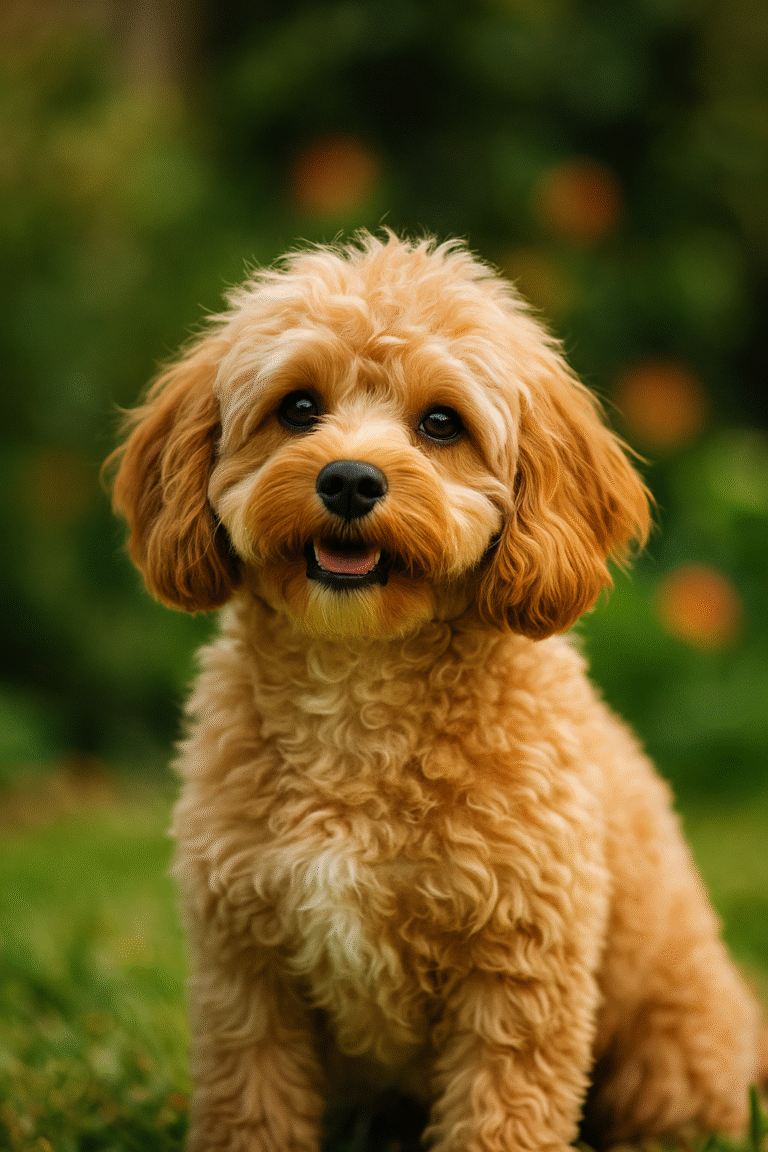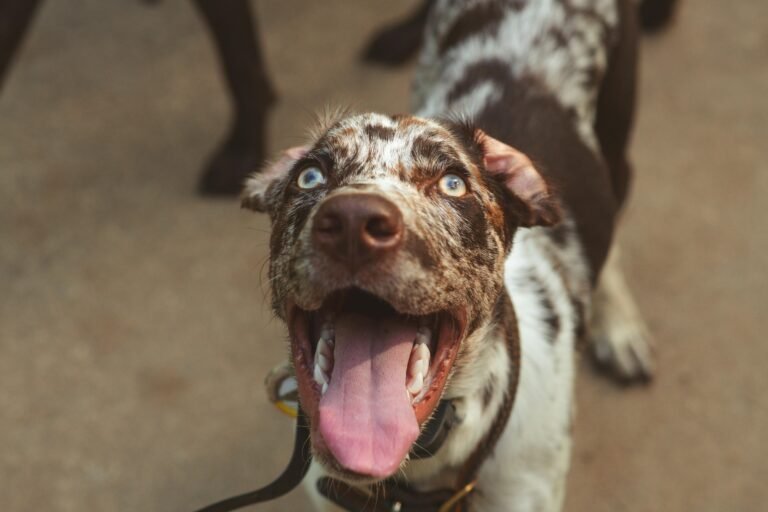Introduction
Few breeds evoke the same mix of wonder and affection as the Great Dane. Standing as tall as a small horse but as gentle as a lap‑dog, these giants have been companions of nobles and family pets for centuries. Despite their intimidating size, Great Danes are known for their friendly demeanor, affectionate nature, and willingness to lounge on any sofa that will accommodate them. Their long legs and deep chest give them a regal profile, while their dark, expressive eyes hint at their eagerness to bond with people. For many, the Great Dane is a delightful contradiction: a dog whose enormous presence is matched by an equally large capacity for love.
History and Origin
Great Danes trace their ancestry back hundreds of years to boar hounds in Germany and England. German nobles used large mastiff‑type dogs to protect their estates and hunt wild boar. Over time, these dogs were crossed with sighthounds like the Irish Wolfhound to add speed and elegance to their size. By the 17th and 18th centuries, the breed we recognize today began to take shape. In Germany they were known as “Deutsche Dogge,” or German mastiffs, and served as guardians of estates. The French called them “Grand Danois,” which is where the English name “Great Dane” originates, despite the breed having no connection to Denmark. In the 19th century, German breeders refined the dogs to create a taller, more elegant version of the original boar hounds, focusing on temperament as well as appearance. Today’s Great Danes are far removed from their aggressive hunting ancestors, yet they still retain the noble bearing of their lineage.
Physical Characteristics
Great Danes are among the largest domestic dog breeds. Adult males typically stand between 30 and 34 inches at the shoulder, while females are slightly smaller at 28 to 32 inches. It’s not uncommon for a mature male to weigh between 140 and 175 pounds, with females ranging from 110 to 140 pounds. Despite their size, these dogs should never appear clumsy or heavy‑set; their build is powerful but balanced, with long legs, a deep chest, and a long, moderately narrow head. Their coat is short and sleek, requiring minimal grooming, but their sheer size means they will make themselves known anywhere they walk.
Great Danes come in several striking colors and patterns. Common coat variations include:
- Fawn – a golden yellow body with a black “mask” on the face.
- Brindle – black tiger stripes on a fawn or tan background.
- Harlequin – a pure white base color with irregular black patches, giving a patchwork appearance.
- Mantle – a solid black body with a white collar, muzzle, chest, and legs.
- Blue – a steel gray coat that can range from light to dark shades.
- Black – a glossy, jet‑black coat.
- Merle – a marbled gray base with darker gray or black patches.
Their ears are naturally floppy, although some breeders still crop them for a more erect appearance (a practice that is declining in many countries). Their eyes are medium‑sized and dark, contributing to an attentive yet gentle expression. With their long, whip‑like tail and powerful legs, these dogs move with surprising grace.
Temperament and Personality
Beneath their formidable exterior lies one of the sweetest temperaments in the dog world. Great Danes are often called gentle giants because of their patient, loving nature. They thrive on human companionship and form close bonds with their family members, often following them from room to room. Many owners describe them as lap dogs trapped in a giant body; they will happily climb into a human lap or lean against you for a good head scratch. When properly socialized, Great Danes are wonderful with children and other pets. They are generally calm and easygoing indoors, preferring to stretch out on a soft bed or sofa rather than run around the house.
Despite their friendly disposition, Great Danes can be excellent watchdogs. Their deep bark and imposing presence are usually enough to deter would‑be intruders, even though aggression is not typical of the breed. They are often reserved around strangers until they have had a chance to assess them. Positive early socialization is key to ensuring that a Great Dane grows up to be confident rather than shy or fearful. Because they are so people‑oriented, they can suffer from separation anxiety if left alone for long periods.
Exercise and Training Needs
For such a large dog, the Great Dane’s exercise needs are moderate. Adult Danes enjoy daily walks and opportunities to play in a secure yard. Puppies and adolescents, however, must not be overexercised; their bones and joints are still developing, and excessive running or jumping can cause lasting damage. As a general rule, let young Danes move at their own pace and avoid forcing them to accompany you on long runs until they are fully mature (around 18 months).
Training a Great Dane should begin as soon as possible. Their sheer size means that even a friendly Dane can accidentally knock over a person if it jumps up in greeting. Teaching basic manners—such as not jumping, walking politely on a leash, and responding to commands—makes them easier to live with and safer to handle. Great Danes are intelligent and respond well to positive reinforcement. Use praise, treats, and patience to encourage the behaviors you want. Consistency is especially important; a behavior that seems cute when your pup is 30 pounds is far less adorable when it weighs over 100 pounds.
In addition to physical exercise, Great Danes benefit from mental stimulation. Puzzle toys, obedience games, and short training sessions help keep their minds engaged and prevent boredom. They are sensitive dogs who may shut down if treated harshly, so focus on building trust and making training fun for both of you.
Grooming and Maintenance
One of the benefits of owning a Great Dane is that they are low maintenance when it comes to grooming. Their short coat only requires weekly brushing to remove loose hair and keep it looking glossy. During shedding seasons in spring and fall, brushing more frequently helps control hair around the home. Occasional baths are usually sufficient unless your dog gets into something messy.
That said, there are a few grooming considerations unique to giant breeds. Great Danes are notorious droolers, particularly after eating or drinking, so keep towels handy to wipe faces and mouths. Their nails grow quickly and should be trimmed regularly to prevent them from splitting or causing discomfort. Because of their size, some owners prefer to have a professional groomer or veterinarian handle nail trimming. Dental hygiene is also important; regular brushing or dental chews help keep their teeth clean.
Beyond coat care, prospective owners should be prepared for the practical realities of living with such a large animal. A Dane needs a sizeable bed or crate, and simple tasks like bathing or getting them into a vehicle require strength and coordination. However, many owners find these challenges worth it for the love and companionship these dogs provide.
Health Considerations
Like many giant breeds, Great Danes have a relatively short lifespan, usually between 7 and 10 years. They are predisposed to certain health issues that potential owners should be aware of. Responsible breeders screen for many of these conditions, but environment and care also play a role. Common health concerns include:
- Gastric Dilatation-Volvulus (Bloat): A life‑threatening condition where the stomach fills with gas and twists. Owners can reduce the risk by feeding smaller, more frequent meals, avoiding vigorous exercise around feeding times, and discussing preventive gastropexy surgery with their veterinarian.
- Hip Dysplasia: Malformation of the hip joint that can lead to arthritis and pain. Responsible breeding, maintaining a healthy weight, and providing appropriate exercise help minimize risk.
- Dilated Cardiomyopathy (DCM): A heart disease where the heart’s ability to pump blood is decreased. Regular veterinary checkups can detect early signs, and treatments may include medication and dietary adjustments.
- Wobbler Syndrome: A neurological condition affecting the cervical spine, causing unsteady gait and weakness. It may require medical management or surgery.
- Osteosarcoma: Bone cancer that occurs more frequently in large and giant breeds. Early detection and treatment improve outcomes, though prognosis can be guarded.
Regular veterinary care is essential for catching health issues early. Feeding a high‑quality diet formulated for giant breeds helps support joint development and reduces the risk of skeletal problems. Because Danes grow rapidly, puppy diets should be closely managed—excess calcium and calories can contribute to orthopedic issues.
Living with a Great Dane
Although they are enormous, Great Danes are surprisingly adaptable to different living situations, provided their basic needs are met. They enjoy being indoors with their family and will happily sprawl on a rug in the living room. However, their size means they need room to move without constantly bumping into furniture. Apartments are not out of the question, but owners must be realistic about space and commit to regular walks and outdoor time. In homes with stairs, be cautious about letting young Danes climb frequently, as this can strain developing joints.
These dogs are extremely social and do not do well isolated in the yard or left alone for long periods. They crave companionship and can develop destructive behaviors if bored or lonely. Because of their height, countertops and tables are within easy reach; training and management are essential to prevent counter surfing. Early socialization with people and other animals helps a Dane grow up to be well‑rounded and confident.
Prospective owners should also consider the financial aspects of owning a giant breed. Food, medications, beds, crates, and veterinary care all cost more for a dog of this size. Travel can be challenging, as you need a vehicle large enough to transport your pet safely. Having realistic expectations and a well‑planned budget will help ensure a happy life for both you and your Dane.
Is a Great Dane Right for You?
Deciding to bring a Great Dane into your home should involve honest self‑assessment. These dogs make loyal companions, gentle playmates for older children, and impressive guardians of the home. They are affectionate, calm, and delightfully goofy at times. However, they require space, time, and a willingness to handle a dog that may outweigh you. They can be clumsy when young, knocking over drinks or sweeping objects off coffee tables with a wag of their tail. Their shortened lifespan means saying goodbye sooner than you might like.
If you’re prepared for the responsibilities of caring for a giant breed, a Great Dane can enrich your life in countless ways. Work with reputable breeders who test for health conditions and provide early socialization, or consider adopting from a rescue. Meet adult Danes in person to see if their demeanor and energy level fit your lifestyle. Consider whether your home, budget, and schedule can accommodate a dog of this magnitude. If the answer is yes, you may find that there truly is nothing like living with one of these gentle giants.
Conclusion
Great Danes are a study in contrasts: imposing yet friendly, elegant yet goofy, powerful yet sensitive. Their history as noble estate guardians has given way to a role as cherished family companions, but they still carry themselves with a dignity that commands respect. To share your life with a Great Dane is to commit to understanding and meeting the needs of a giant dog, from training and exercise to health care and, most of all, love. Those who make that commitment are rewarded with a bond as outsized as the dog itself—a heartwarming presence that fills a home not only with physical size but with gentle affection and grace.






